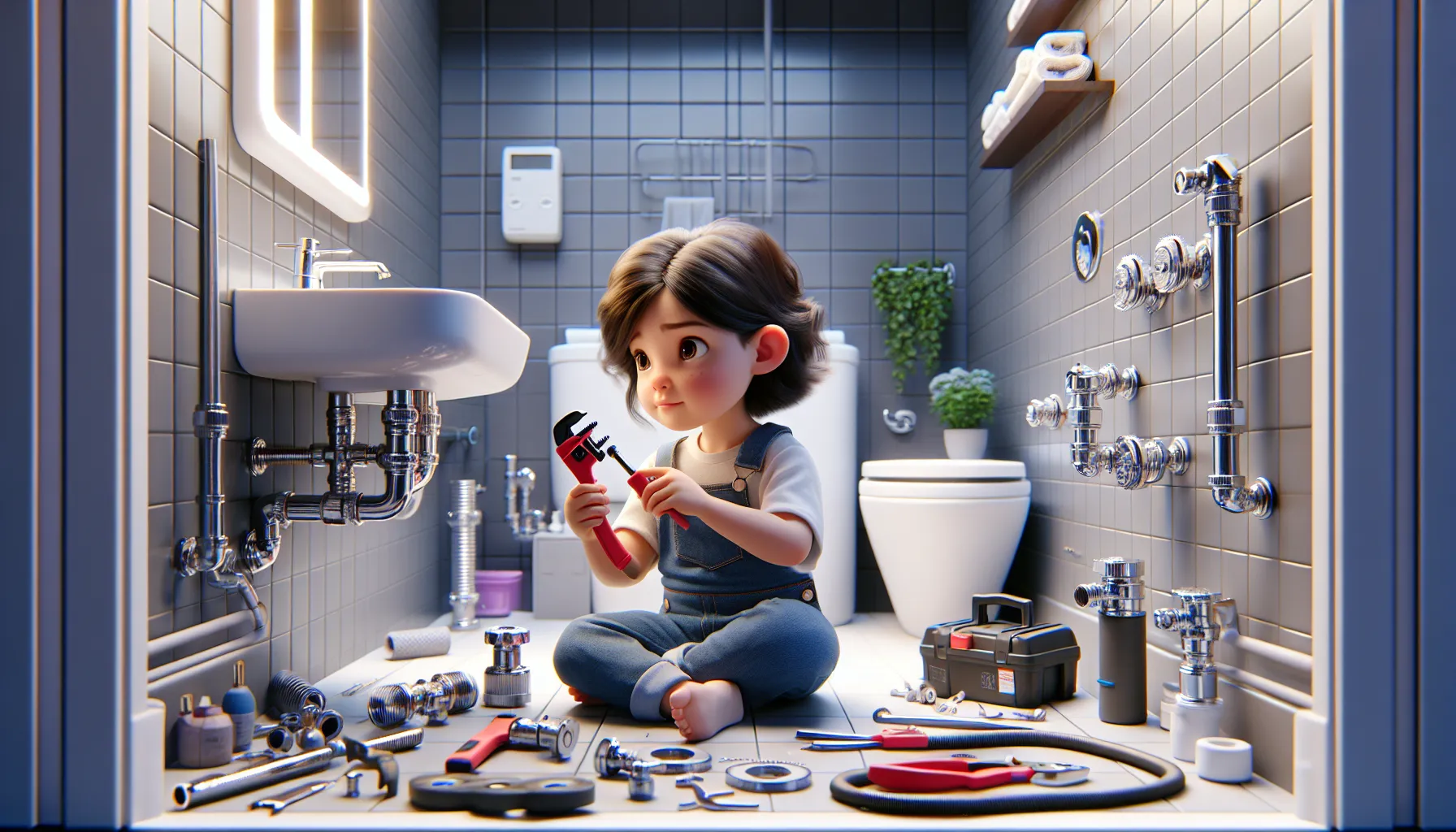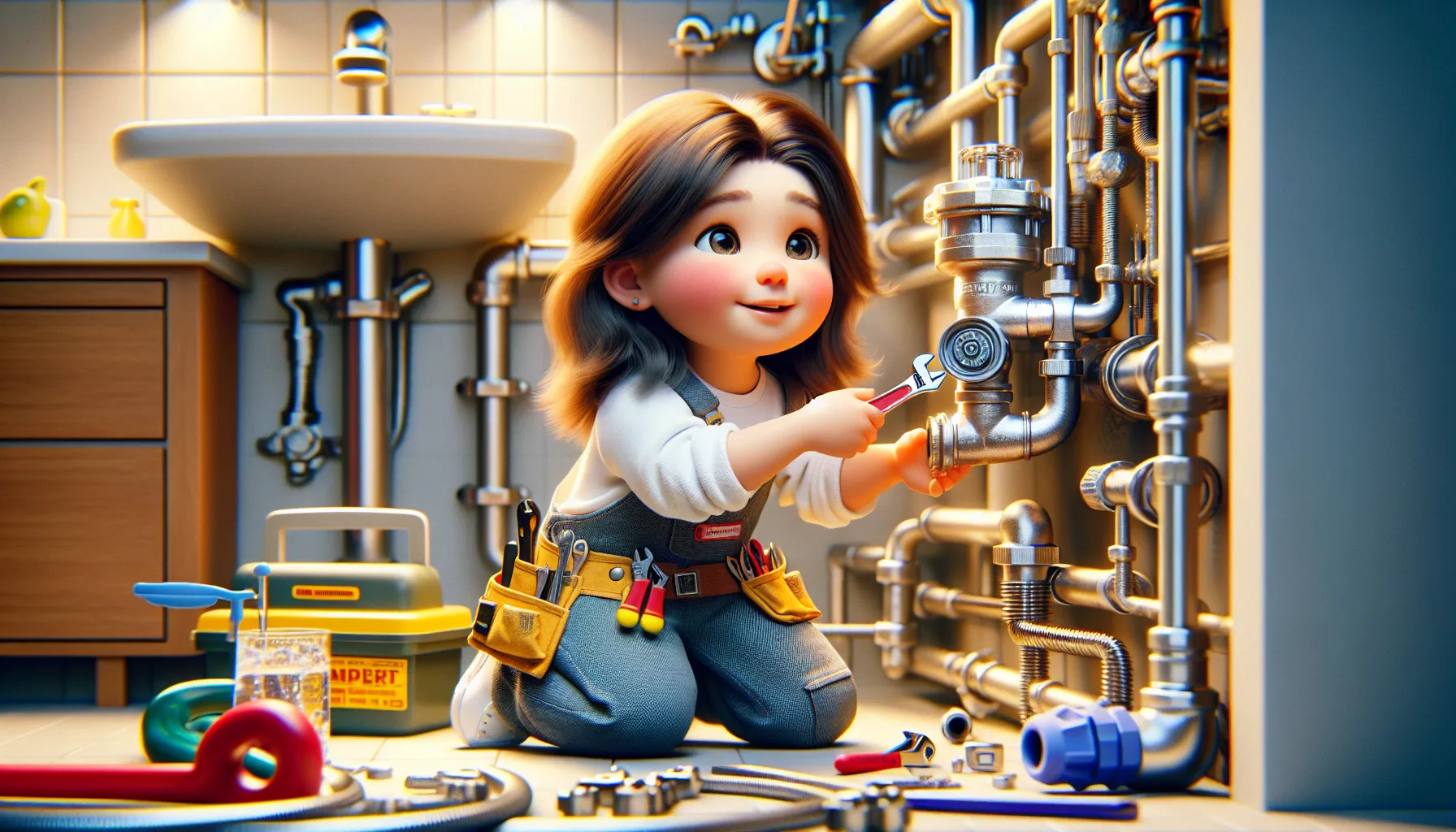Concerning selecting a toilet for your home, you want to make sure you choose wisely. A toilet is a crucial fixture in any household, so picking the right one is vital for both comfort and functionality. With numerous options available in the market, it can be overwhelming to decide. However, considering your specific needs, budget, and space constraints can help simplify the process and ensure you make the best choice for your home.
Key Takeaways:
- Determine the size: Measure your bathroom space to ensure the toilet will fit comfortably.
- Consider flushing power: Look for toilets with efficient flushing systems to prevent clogs.
- Choose the right bowl shape: Decide between round and elongated bowls based on your comfort and space constraints.
- Check for water-saving features: Opt for toilets with dual flush options or low-flow technology to conserve water.
- Think about design and style: Select a toilet that complements the overall aesthetic of your bathroom for a cohesive look.
Understanding Toilet Types and Functionality
There’s a wide variety of toilet types available on the market, each offering different functionalities to suit various needs. To make an informed decision, it’s imperative to understand the key differences between the options before selecting the right toilet for your home. Knowing the functionality of each type will help you choose the best fit for your household.
Gravity-Feed Toilets
Toilets that operate on a gravity-feed system are the most common type found in residential properties. Gravity-feed toilets rely on gravity to flush waste down the drain when the toilet lever is pressed. These toilets are relatively quiet, easy to install, and require minimal maintenance. They are suitable for most households and are cost-effective in terms of water consumption.
Pressure-Assisted Toilets
Toilets equipped with a pressure-assisted system use compressed air to push water into the bowl with more force, resulting in a powerful flush. These toilets are great for commercial settings or homes with heavy usage. They provide a cleaner bowl after each flush and are less likely to experience clogs. However, they tend to be noisier and require professional installation and maintenance.
Pressure-assisted toilets are ideal for high-traffic areas where durability and efficiency are crucial. They can handle larger waste loads and are less prone to clogging, making them a popular choice for busy households or public restrooms. While they may be louder than gravity-feed toilets, the performance and cleanliness they offer make them a preferred option for many homeowners.
Dual-Flush Toilets
Now, dual-flush toilets have become increasingly popular due to their water-saving features. These toilets offer two flush options – one for liquid waste and a more powerful one for solid waste. By choosing the appropriate flush, you can save a significant amount of water over time. Dual-flush toilets are environmentally friendly and can help reduce water bills while maintaining efficient performance.
Types of dual-flush toilets include manual and sensor-operated models. Manual dual-flush toilets require the user to select the flush option, while sensor-operated toilets automatically determine the flush strength based on the waste present. Both types offer water-saving benefits and customizable flushing options to suit individual needs.
Wall-Mounted and In-Wall Tanks
One of the latest trends in bathroom design is the use of wall-mounted toilets with in-wall tanks. These toilets are mounted on the wall, with the water tank concealed within the wall for a sleek and modern look. Wall-mounted toilets save space and make cleaning the floor easier. In-wall tanks provide a clean aesthetic and quiet operation, making them a popular choice for contemporary bathroom designs.
Toilets with wall-mounted and in-wall tanks are ideal for small bathrooms or those looking to achieve a minimalist design. The concealed tanks save space and offer a streamlined appearance, creating a luxurious and sophisticated atmosphere in the bathroom.
Composting Toilets
Any off-grid or eco-conscious homeowner may opt for composting toilets, which break down waste into compost material through a natural decomposition process. These toilets do not require water for flushing and are a sustainable alternative to traditional toilets. Composting toilets are ideal for remote areas without access to plumbing or for those looking to reduce their environmental impact.
PressureAssisted toilets combine water efficiency with eco-friendliness, making them a practical choice for those seeking sustainable living solutions. While composting toilets may require a different maintenance approach, their environmental benefits and self-sufficiency appeal to many eco-conscious consumers.
Smart Toilets and Advanced Features
- Assuming
- Toilets
Assuming a more technologically advanced approach to bathroom fixtures, smart toilets come equipped with a range of features such as bidet functionality, heated seats, automatic flush, and customizable settings. These toilets offer increased comfort and convenience, with some models even featuring built-in air purifiers and deodorizers for a fresher bathroom experience.
- Toilets
- Toilets
Smart toilets continue to evolve with innovative features to enhance the overall bathroom experience. While they may come at a higher price point, the luxury and convenience they provide make them a worthwhile investment for homeowners seeking a modern and sophisticated bathroom upgrade.
Factors to Consider When Choosing a Toilet
To ensure you select the perfect toilet for your home, there are several crucial factors to keep in mind.
- Bathroom space and toilet size
- Water efficiency and environmental impact
- Bowl shape and comfort
- Toilet style and design
- Flushing mechanism and performance
Recognizing these considerations will help you make an informed decision that fits your needs and preferences.
Bathroom Space and Toilet Size
On top of the list is the available bathroom space and the size of the toilet. Measure the area where the toilet will be placed to ensure the new fixture fits comfortably. Consider the rough-in measurement, which is the distance between the wall behind the toilet and the center of the drainpipe. This will help you determine the correct size and shape of the toilet for your bathroom.
Water Efficiency and Environmental Impact
Choosing a toilet that balances water efficiency with environmental impact is crucial for reducing water consumption and minimizing your home’s environmental footprint. Look for models with a WaterSense label, which indicates they meet EPA criteria for efficiency and performance. It is worth investing in a toilet that uses less water per flush, saving you money on utility bills in the long run.
Bowl Shape and Comfort
Little details like bowl shape can significantly impact your comfort while using the toilet. Consider whether a round or elongated bowl would be more comfortable for you. Some toilets even offer ergonomic designs that enhance comfort during use. Taking efficiency into account, choose a bowl shape that suits your needs and preferences.
Toilet Style and Design
Even though toilets are primarily functional fixtures, toilet style and design can complement your bathroom’s aesthetic. You can choose from various styles, including traditional, modern, or sleek designs. With the wide range of options available, you can pick a toilet that not only performs well but also enhances the overall look of your bathroom.
Flushing Mechanism and Performance
For optimal performance, consider the flushing mechanism of the toilet. Different flushing systems such as gravity-fed, pressure-assisted, or dual flush have varying levels of efficiency and power. For a more reliable and effective flush, look for toilets with high-performing flushing mechanisms that clear waste effectively while conserving water.
Environmental awareness is crucial when selecting a new toilet for your home. By considering factors such as water efficiency, bowl shape, flushing mechanism, and overall design, you can choose a toilet that meets your needs while minimizing your environmental impact. Remember to prioritize both performance and sustainability when making your decision.
The Importance of Water Usage Ratings
Understanding GPF and LPF Standards
All toilets come with a water usage rating, which is measured in either gallons per flush (GPF) for liquid waste or liters per flush (LPF) for solid waste. The lower the GPF/LPF number, the less water is used with each flush. Standard toilets typically use around 1.6 GPF, but newer models are designed to use as little as 1.28 GPF or even less.
Economic and Environmental Benefits
Water efficient toilets offer significant economic and environmental benefits. The primary advantage is a reduction in water usage, which can lead to lower water bills and a decreased environmental impact. With advancements in technology, these toilets now offer the same flushing power as their higher GPF counterparts, making them a practical and sustainable choice for any household.
Availability of WaterSense Labeled Toilets
You can easily identify water efficient toilets by looking for the WaterSense label. WaterSense is a program sponsored by the Environmental Protection Agency (EPA) that certifies products meeting high standards of water efficiency. Understanding the significance of the WaterSense label can help you make the best choice for your home, both in terms of performance and sustainability.
Budget Considerations
Cost vs. Long-Term Savings
After considering your needs and preferences for a new toilet, it’s crucial to factor in the cost versus the long-term savings. While it may be tempting to opt for the cheapest option available, it’s crucial to remember that higher-quality toilets often come with a higher price tag for a reason. Investing in a more expensive, energy-efficient toilet can lead to significant long-term savings on your water bill. These toilets are designed to use less water per flush, which can result in savings over time.
Price Range of Different Toilet Types
With a wide range of toilet types available on the market, it’s crucial to understand the price range associated with each. Basic models such as two-piece toilets are typically more affordable, while smart toilets with advanced features can come with a higher price tag. Wall-mounted toilets are also generally more expensive due to the additional installation requirements. Knowing the price range of different toilet types can help you make an informed decision based on your budget and needs.
| Toilet Type | Price Range |
| Two-Piece Toilet | Affordable |
| Smart Toilet | Higher price tag |
| Wall-Mounted Toilet | More expensive |
| Pressure-Assist Toilet | Moderate |
| Dual-Flush Toilet | Mid-range |
Knowing the price range of different toilet types can help you narrow down your options and find a toilet that fits your budget without compromising on quality or features.
Potential Rebates and Tax Incentives
With the increasing focus on sustainability and energy efficiency, many homeowners may be eligible for rebates and tax incentives when purchasing certain types of toilets. Some municipalities offer rebates for upgrading to water-efficient toilets, while there are federal tax incentives for energy-efficient home improvements. Researching potential rebates and tax incentives before making a purchase can help offset the initial cost of a more expensive, eco-friendly toilet.
The availability of rebates and tax incentives varies by location, so it’s important to check with your local government or utility provider to determine if you qualify for any financial incentives when upgrading your toilet.
Installation and Maintenance Tips
Your choice of a toilet is crucial for your home, but proper installation and maintenance are equally important. By following these guidelines, you can ensure a smooth experience and prolong the life of your toilet.
Professional vs. DIY Installation
An expert installation of your toilet can provide peace of mind and guarantee proper function. However, if you’re confident in your skills, a DIY installation can save you money. Remember to carefully follow the manufacturer’s instructions to prevent leaks or other issues. Assume that any mistakes in installation can result in costly repairs down the line.
Essential Tools and Materials
If you choose to install or repair your toilet yourself, having the right tools and materials is important. A few items you may need include a wrench, screwdriver, plunger, wax ring, bolts, and a level. Materials such as a new flapper, fill valve, and supply line may also be necessary for maintenance tasks.
It’s important to invest in high-quality tools and materials to ensure the job is done correctly and to prevent future problems. Keep these items in your home for quick access when needed.
Routine Maintenance to Ensure Longevity
An ongoing maintenance routine can help extend the life of your toilet. Regularly check for leaks, adjust the water level, clean the inside of the bowl, and inspect for any signs of wear or damage. Addressing any issues promptly can prevent more significant problems later on.
Routine maintenance also includes tightening any loose bolts, ensuring the flush mechanism works correctly, and replacing any worn-out parts. By staying proactive in your toilet care, you can avoid unexpected breakdowns and costly repairs.
Aesthetics and Coordination with Bathroom Decor
Keep in mind that the toilet is a crucial aspect of any bathroom’s aesthetics. In the context of choosing the right one, you must consider how it will blend in with your bathroom decor. Color and Material Choices play a significant role in this decision-making process. The color of the toilet should complement the overall color scheme of the bathroom. Neutral tones like white, beige, or light gray are versatile choices that are likely to coordinate well with various decor styles.
Coordination of the toilet’s material with other elements in the bathroom is also important. For a cohesive look, consider the materials used in your sink, bathtub, and shower fixtures. If you have a contemporary bathroom with sleek, modern finishes, a toilet with clean lines and a glossy finish would be a suitable match.
Compatibility with Bathroom Layout and Style
If you are considering a major bathroom renovation, the toilet’s placement and style should harmonize with the new layout and design. The toilet should not obstruct movement within the space and should allow for easy access. Additionally, the style of the toilet should complement the overall theme of the bathroom. For example, a vintage-inspired bathroom would benefit from a high-tank pull chain toilet, while a minimalist bathroom would be best served by a wall-mounted or one-piece toilet with simple, sleek lines.
Bathroom Layout
When assessing the compatibility of a toilet with your bathroom layout, factors such as the size of the room, the position of plumbing outlets, and potential challenges like corners or alcoves should be carefully considered. Make sure to measure the space accurately and choose a toilet that fits comfortably without overwhelming the room.
Final Words
Presently, choosing the right toilet for your home involves considering factors such as size, style, flush type, water efficiency, and ease of maintenance. It’s important to measure the available space in your bathroom and select a toilet that fits comfortably while enhancing the aesthetics of the room. Opting for a dual flush toilet can help save water and reduce your utility bills, making it a wise long-term investment.
Ultimately, selecting the right toilet for your home is a decision that should not be taken lightly. By carefully evaluating your needs and preferences, as well as considering the tips and factors mentioned above, you can be sure to choose a toilet that meets your requirements and provides optimal performance for years to come.
FAQ
Q: What factors should I consider when choosing a toilet for my home?
A: When choosing a toilet for your home, consider factors such as the flushing mechanism, bowl shape, size, water usage, and overall design to ensure it meets your needs and preferences.
Q: What is the difference between a one-piece and two-piece toilet?
A: A one-piece toilet has the tank and bowl fused together into a single unit, making it easier to clean and install. A two-piece toilet has a separate tank and bowl, offering more flexibility in terms of design and pricing.
Q: How important is the flushing system when selecting a toilet?
A: The flushing system is crucial as it determines the toilet’s performance in terms of waste removal and water efficiency. Look for toilets with powerful and water-saving flushing mechanisms like dual flush or pressure-assisted systems.
Q: What bowl shape options are available for toilets?
A: The two common bowl shapes for toilets are round and elongated. Round bowls are space-saving and suitable for small bathrooms, while elongated bowls offer more comfort and a modern look.
Q: Is water consumption an important consideration when choosing a toilet?
A: Yes, water consumption is crucial when selecting a toilet to save on water bills and promote environmental sustainability. Opt for toilets with a WaterSense label or low-flow technology to reduce water usage without compromising performance.


